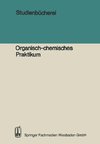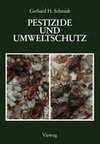
Austrian wine
Source: Wikipedia. Pages: 25. Chapters: Wachau wine, 1985 diethylene glycol wine scandal, Grüner Veltliner, Districtus Austriae Controllatus, Spätlese, Klopotec, Blaufränkisch, Blauer Portugieser, Kabinett, Heuriger, Trockenbeerenauslese, Roter Veltliner,... Viac o knihe
Produkt je dočasne nedostupný
13.38 €
bežná cena: 15.20 €
O knihe
Source: Wikipedia. Pages: 25. Chapters: Wachau wine, 1985 diethylene glycol wine scandal, Grüner Veltliner, Districtus Austriae Controllatus, Spätlese, Klopotec, Blaufränkisch, Blauer Portugieser, Kabinett, Heuriger, Trockenbeerenauslese, Roter Veltliner, Zierfandler, Welschriesling, Uhudler, St. Laurent, Ausbruch, Zweigelt, Rotgipfler, Schilcher, Spätrot-Rotgipfler. Excerpt: Austrian wines are mostly dry white wines (often made from the Grüner Veltliner grape) with some luscious dessert wines made around the Neusiedler See. About 30% of the wines are red, made from Blaufränkisch (also known as Lemberger, or as Kékfrankos in neighbouring Hungary), Pinot Noir and locally bred varieties such as Zweigelt. Four thousand years of winemaking history counted for little after the "antifreeze scandal" of 1985, when it was revealed that some wine brokers had been adulterating their wines with diethylene glycol. The scandal destroyed the market for Austrian wine, but in the long term has been a force for good, compelling Austria to tackle low standards of bulk wine production, and reposition itself as a producer of quality wines that stand comparison with the best in the world. The country is also home to Riedel, makers of some of the most expensive wine glasses in the world. There is archaeological evidence of grape growing in Traisental 4000 years ago. Grape seeds have been found in urns dating back to 700BC in Zagersdorf, whilst bronze wine flagons of the Celtic La Tène culture dating to the 5th century BC have been found at Dürrnberg in Salzburg state. Viticulture thrived under the Romans, once Marcus Aurelius Probus (Roman Emperor 276-282) had overturned the ban on growing grapes north of the Alps. Both Grüner Veltliner and Welschriesling appear to have been grown around the Danube since Roman times. Viticulture suffered with the invasions of Bavarians, Slavs and Avars after the fall of the Roman empire, but from 788 the rule of Charlemagne saw considerable reconstruction of vineyards and introduction of new grape presses. Once Otto the Great had seen off the threat from Magyar incursions in 955, Austrian viticulture was nurtured by the Church and encouraged among the populace at large. The first vineyard names recorded are Kremser Sandgrube in 1208, and Steiner Pfaffenberg in 1230. Rudolf IV introduced the first wine tax, Ungeld, in 1359, as
- Vydavateľstvo: Books LLC, Reference Series
- Formát: Paperback
- Jazyk:
- ISBN: 9781156113127


 Anglický jazyk
Anglický jazyk 



 Nemecký jazyk
Nemecký jazyk 





